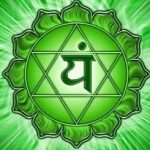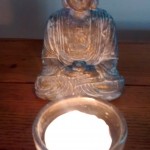 Next week, the focus for our practice will be on healing and balancing the heart chakra – Anahata, meaning unhurt, unstruck, and unbeaten – which rests in the centre of the chest. This chakra is considered to be the centre of the chakra system and the gateway between the three lower physical chakras and the three higher spiritual chakras. It is the seat of emotional consciousness and it relates to the element of air which is all around us, and in us within our breath.
Next week, the focus for our practice will be on healing and balancing the heart chakra – Anahata, meaning unhurt, unstruck, and unbeaten – which rests in the centre of the chest. This chakra is considered to be the centre of the chakra system and the gateway between the three lower physical chakras and the three higher spiritual chakras. It is the seat of emotional consciousness and it relates to the element of air which is all around us, and in us within our breath.
The… air element of Anahata feeds the flames of the manipura fire chakra, giving us the power to love unconditionally and care for everything on our planet. Its physical location is the heart, upper chest and upper back. The heart chakra directly affects the heart, lungs, chest, arms, and hands, and physical symptoms of a lack of heart chakra energy can include shallow breathing, asthma, and other lung diseases, poor circulation, low blood pressure and some heart conditions, whilst too much energy can manifest as high blood pressure or heart disease.
Healthy heart chakra energy allows us to open up to, and connect with, harmony and peace. The quality and power of love in our life is directly reflected in the health of our heart centre. When our heart chakra energy is healthy, we feel surrounded by love, compassion, and joy and we are connected to the world around us. A deficiency of energy in the heart chakra may manifest emotionally as feelings of shyness and loneliness and we may struggle with forgiveness and empathy.
Mentally, an imbalanced heart chakra can result in feelings of unworthiness or an inability to trust ourselves or others. An over-powerful heart chakra can manifest as co-dependence, manipulative behaviours, possessiveness and jealousy.
Pranayama (breath-energy) practices, help to balance this chakra. Working with the breath increases our capacity for prana and air, along with our vitality and enthusiasm. If we hold our Selves with our head forward, shoulders rounded and chest collapsed, our head is leading our heart which can lead us to become overly focused on thought, and less in touch with our emotions and our body. Anahata chakra redresses this balance. So draw the shoulders back, expand across the chest, lengthen the neck and lift the head to feel more “heart-centred” and invite in all the beautiful qualities of Anahata, whose natural, feminine quality is to release and let go. The most powerful way to open, energise and balance the heart chakra is to love ourselves and others. Let love heal.
Intentions for Anahata practice might be: To offer and receive love with ease; cultivating compassion, allowing happiness in; releasing the fear of getting hurt; letting go of old heartache; cultivating humility; becoming less possessive; to to surrender and let go.
I look forward to exploring this beautiful chakra together, throughout our practice next week.
Om Shanti, Shanti, Shanti (peace, peace, peace).




 Next week, the focus for our practice will be on healing and balancing the heart chakra – Anahata, meaning unhurt, unstruck, and unbeaten – which rests in the centre of the chest. This chakra is considered to be the centre of the chakra system and the gateway between the three lower physical chakras and the three higher spiritual chakras. It is the seat of emotional consciousness and it relates to the element of air which is all around us, and in us within our breath.
Next week, the focus for our practice will be on healing and balancing the heart chakra – Anahata, meaning unhurt, unstruck, and unbeaten – which rests in the centre of the chest. This chakra is considered to be the centre of the chakra system and the gateway between the three lower physical chakras and the three higher spiritual chakras. It is the seat of emotional consciousness and it relates to the element of air which is all around us, and in us within our breath.